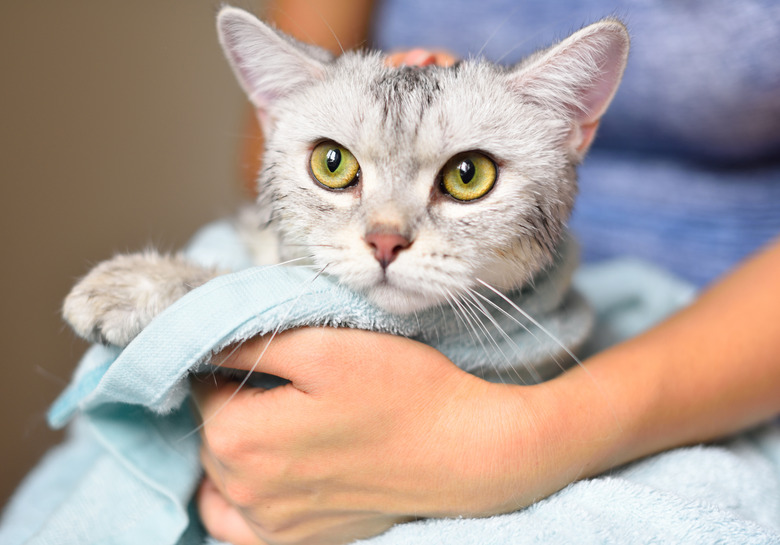How To Get Sticky Glue Out Of Cat Hair
Getting glue or other sticky residues out of your pet's fur may seem like an odd problem, but if you have a curious cat in your home, you may be familiar with a sticky or matted coat. This is a bigger issue if you have glue traps or flypaper set up in or around your house. If your cat has found her fur or skin covered in sticky glue, you can get her back to normal with just a few household products and a lot of patience.
Why cat hair?
Why cat hair?
Dogs are well-known for getting into trouble, but cats can come across their fair share of opportunities to mess up their coats as well. As curious creatures, cats enjoy exploring new territories and investigating pretty much anything they can get close to. If they can sniff it or swat at it, your cats probably want to check it out. Among these enticing delights are traps designed to catch and kill small creatures, like mice or bugs. Whether your cat got his paws stuck trying to bat at a glue trap, or accidentally walked on or grazed against a trap or a piece of fly tape, a gluey mess isn't all that uncommon and will take assistance to remove.
Removing glue from fur
Removing glue from fur
When removing glue from animal hair or fur, you'll likely find success when using one low-cost household ingredient: oil. Animals.me lists oils as one of the safest and most effective solvents for removing adhesive from fur. The type of oil you use can vary and can include pretty much anything you have on hand, such as vegetable oil, canola oil, and even baby oil. They work well if you can heat them up for a few seconds, so they become much easier to spread. If you don't have oil on hand, peanut butter or butter will also work in a pinch.
To remove the glue, simply rub some oil onto the affected area, massaging it in to unbind as much of the sticky substance from the fur as possible until the glue is removed. Once her fur is glue-free, rinse her with lukewarm water if she lets you, or try to dampen her fur with a wet cloth. Then, use mild dish soap on her fur, which will break down any residual oil that's left on her hair.
Finally, use a towel to dry her, and allow her to rest as much as she needs. Being trapped and released can be a traumatic experience, so she may need some alone time. If she seems especially distant or is avoiding you for a day or two, check her for injuries, and take her to a veterinarian if you notice any tears or irritation on her skin.
For cats stuck in traps
For cats stuck in traps
If you find your cat stuck in a glue trap or tangled up in fly paper, the first thing you'll want to do is remain calm, and help your cat remain that way too. If your cat is yowling or trying to tear himself away from the glue trap, PETA suggests draping a towel loosely over his head, which may work to calm him down.
Once he's settled, apply oil the same way you would if it were just adhesive residue on his fur. If you see your cat's feet stuck in glue, or any body part where his skin is in contact with the adhesive, do not pull the trap away from his paws, as you could tear the skin. Just keep massaging oil onto the affected area until the trap slides off, then clean his fur following the steps mentioned above.
Glue trap alternatives
Glue trap alternatives
Using a glue trap to capture an animal is a cruel methods, as the death that ensues is a slow, terrifying, and painful one. They also present opportunities for household and other animals to become trapped in the glue, which can result in injuries or death. In the best case scenarios, you end up with the annoying task of removing them from the trap. Fortunately, there are several humane alternatives that effectively work to remove pests from the home and that won't harm your pets.
